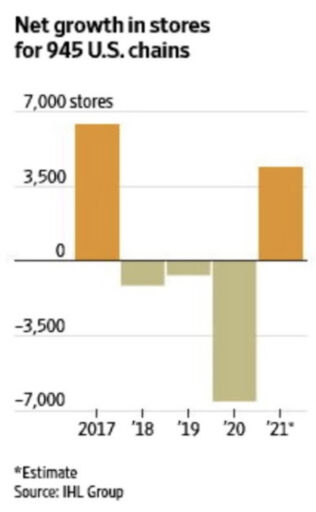The growing volume of data on consumer and crowd behavior is having significant implications on real estate design. It is making physical spaces more interactive for marketers and contributing to in-person shopping growing in 2021. Retail tech investment hit a record $31.5 billion in the second quarter this year.
In a clear signal of market shift, 2021 has seen more store openings than closings. “After loosing ground to e-commerce, brick-and-mortar stores are back in style” writes Wall Street Journal. Technology, which was once seen as the replacement of the physical, is now enabling a new frontier of real estate investment and creating hybrid opportunities for brands to interact and learn about their consumers.
New York Times recently highlighted that “tech start-ups are offering new tools to help retailers and entertainment venues be more efficient by counting crowds, tracking foot traffic and following local shopping habits.” This in-depth data on consumer activity within the physical store and spaces is new and an area of significant growth and development. “Amazon has spent generously on physical retail, including $13.4 billion on the acquisition of Whole Foods, and the development of its Just Walk Out system, which kick-started a race for cashier-less checkout among grocery stores and retailers.”
Artificial Intelligence is being used to train extremely accurate cameras in high-volume, high-density environments and build systems that understand where people are in real time, down to the centimeter. The information of where and what shoppers look at and purchase uses high definition cameras and advanced software, which is even more insightful than the digital journey and is part of a growing effort to use data collection to make commercial real estate more efficient.
In today’s market, “data eliminates the risk,” said Ken Martin, executive director of global sales at Cisco, adding that crowd-tracking technology could guarantee a high return on investment. The utilization of real estate is evolving into the web 3.0 and becoming enmeshed with the digital sphere.


